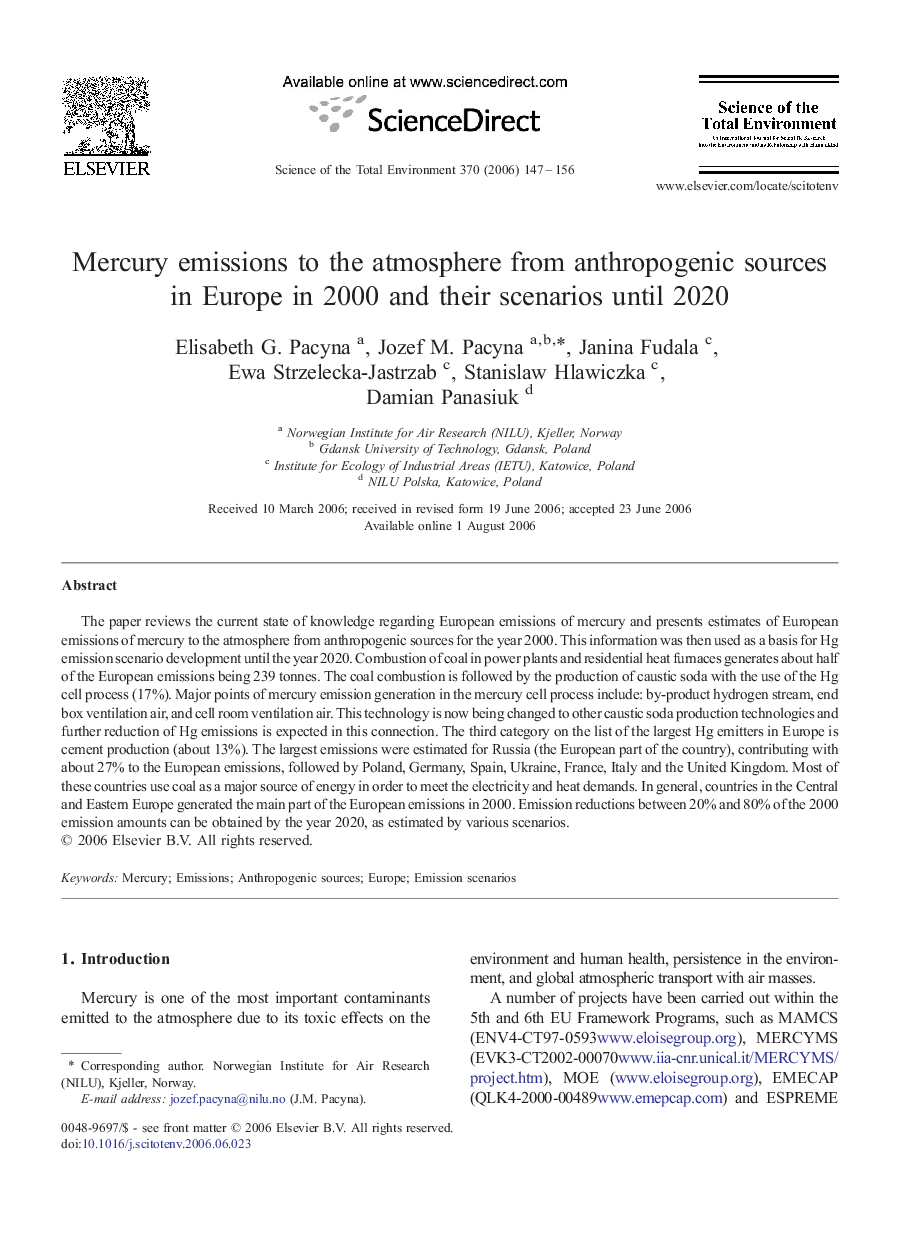| Article ID | Journal | Published Year | Pages | File Type |
|---|---|---|---|---|
| 4433792 | Science of The Total Environment | 2006 | 10 Pages |
The paper reviews the current state of knowledge regarding European emissions of mercury and presents estimates of European emissions of mercury to the atmosphere from anthropogenic sources for the year 2000. This information was then used as a basis for Hg emission scenario development until the year 2020. Combustion of coal in power plants and residential heat furnaces generates about half of the European emissions being 239 tonnes. The coal combustion is followed by the production of caustic soda with the use of the Hg cell process (17%). Major points of mercury emission generation in the mercury cell process include: by-product hydrogen stream, end box ventilation air, and cell room ventilation air. This technology is now being changed to other caustic soda production technologies and further reduction of Hg emissions is expected in this connection. The third category on the list of the largest Hg emitters in Europe is cement production (about 13%). The largest emissions were estimated for Russia (the European part of the country), contributing with about 27% to the European emissions, followed by Poland, Germany, Spain, Ukraine, France, Italy and the United Kingdom. Most of these countries use coal as a major source of energy in order to meet the electricity and heat demands. In general, countries in the Central and Eastern Europe generated the main part of the European emissions in 2000. Emission reductions between 20% and 80% of the 2000 emission amounts can be obtained by the year 2020, as estimated by various scenarios.
